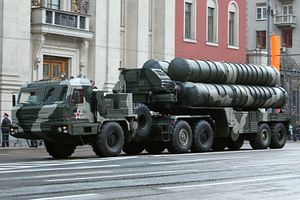U.S. Defense Secretary James Mattis has recently expressed optimism that New Delhi and Washington will be able to resolve their differences pertaining to a $5.5 billion Indian-Russian defense deal for the procurement of five regiments of Russian-made Almaz-Antei S-400 Triumf air defense systems (NATO reporting name: SA-21 Growler) that could trigger U.S. sanctions against India.
“We will work everything out. Trust me,” Mattis told reporters on December 3 during a press briefing in the run-up of an official visit by his Indian counterpart, Nirmala Sitharaman, to the Pentagon in Washington DC. “We’ll work all this forward,” Mattis added. “This is the normal collaboration and consultation that we have with each other.” The U.S. defense secretary has repeatedly spoken out against the imposition of sanctions on India under U.S. legislation known as the Countering America’s Adversaries Through Sanctions Act (CAATSA) over the past months.
“CAATSA, which came into effect in January 2018, is aimed at punishing Russia for its alleged interference in the 2016 presidential elections and mandates the imposition of economic sanctions on countries importing Russian military hardware,” I explained previously. “However, the Trump administration has been given authority under this this year’s U.S. National Defense Authorization Act (NDAA) to waive sanctions in certain circumstances pertaining to Russian legacy systems that costs less than $15 million.”
Nonetheless, the S-400 air defense systems are considerably more expensive and far too advanced to qualify as legacy systems with a below $15 million price tag. Indeed, the S-400 is considered to be one of the most advanced and effective long-range interceptor-based air defense systems in the world, although it has never been tried in actual combat. As a result, the waiver would technically not apply to the S-400 procurement.
Notably, China was sanctioned by the United States for taking delivery of advanced Russian military hardware in September. In detail, the U.S. imposed sanctions on the People’s Liberation Army’s (PLA) Equipment Development Department (EDD) for the Chinese military’s procurement of S-400 air defense systems and Sukhoi Su-35S (NATO reporting name: Flanker-E) fourth generation, twin-engine, multirole fighter aircraft.
India and Russia signed the $5.5 billion S-400 defense deal during a ceremony witnessed by Indian Prime Minister Narendra Modi and Russian President Vladimir Putin on October 5. Delivery of the first S-400 unit from Russia to India is not expected until 2020. The United States could hold off on the imposition of sanctions until then. However, there is a growing consensus in Washington that the burgeoning evolving strategic partnership with India should not be put in jeopardy by CAATSA — making sanctions, according to many informed observers, highly unlikely.
Indeed, India and the United States will have to find a modus vivendi beyond CAATSA when it comes to Russian arms imports lest they endanger closer bilateral military relations, especially as the S-400 air defense systems will likely not be the last Indian purchase of Russian military equipment in the years ahead.

































